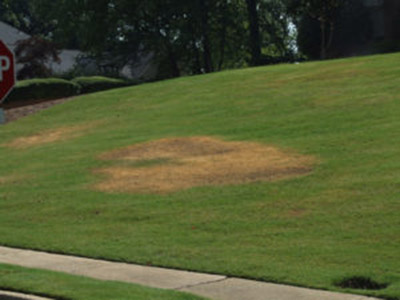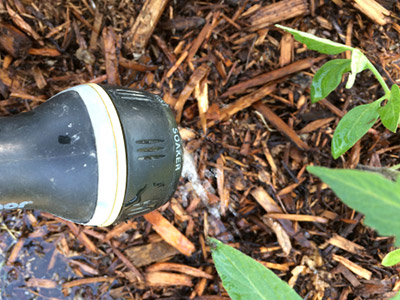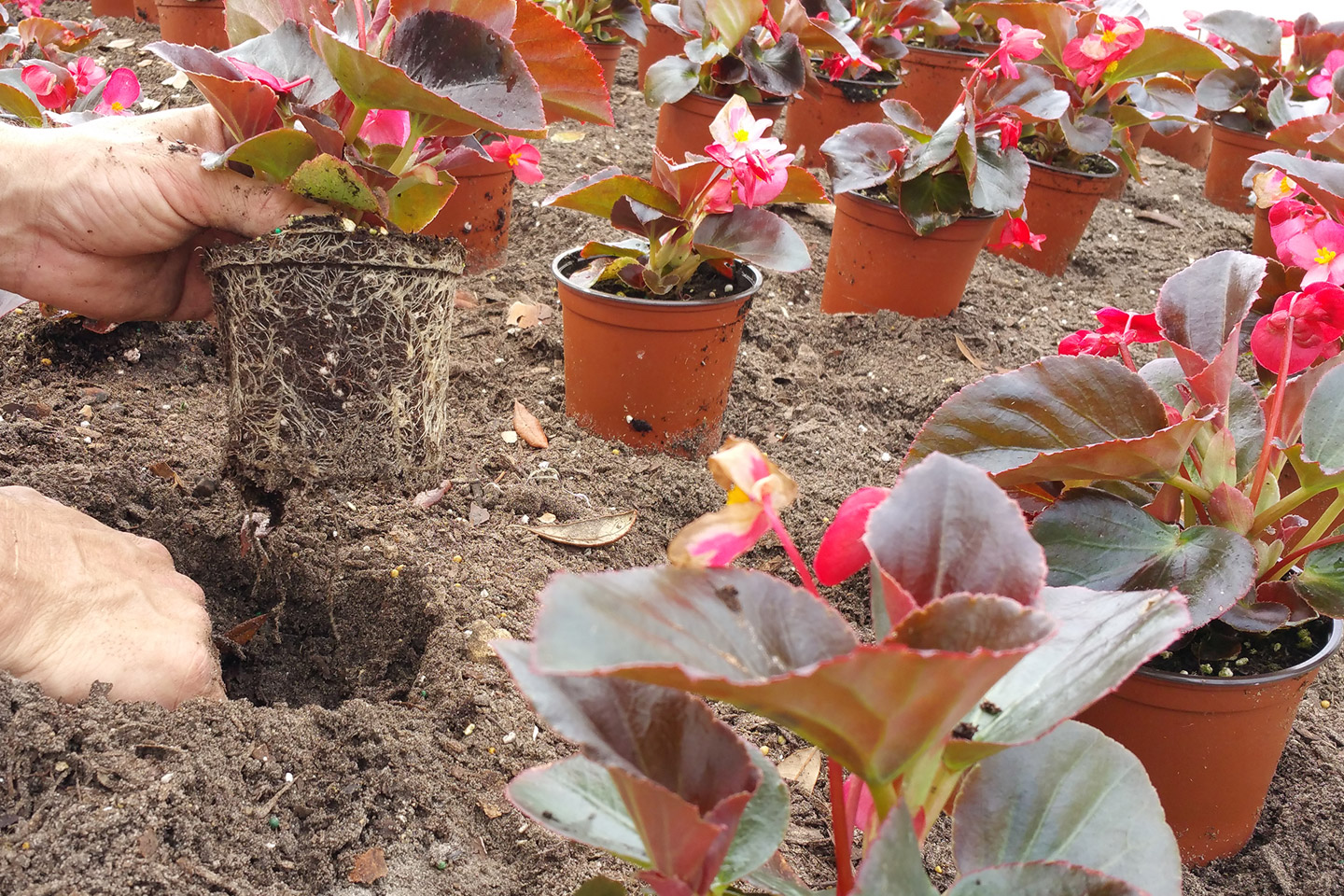What to do in Times of Drought - Sit Down with CEPRA
Summer is here in full swing! As we're gearing up for more sunshine, our plants are too. Plants have their own biological processes that keeps them cool in hot days. However, when days get to be too hot and dry, these processes become afflicted. Periods of drought can adversely affect the plants in your landscape, but there are several practices we can use to help combat those adverse effects, and prolong the vivacity of your landscape.
The Process
Plants use a biological process called transpiration to keep cool in sunny days. Transpiration is the evaporation of water from plant leaves. Transpiration allows water to move through the plants from the roots to the leaves, and exit out the leaves through tiny pores called stomates. This in turn, increases the relative humidity around the plants, and helps reduce wilting. This movement of water also helps move nutrients through the plants. Plants lose more than 90% of their water through transpiration alone.

Think of transpiration as a link of chains in the soil that gets pulled into the plant through the roots, moves through the stems, and exits through the stomata in the leaves.
The Problem
Plants do their best to protect themselves from the heat of the sun by maintaining the ambient humidity around their leaves at high levels. Water acts as a type of "sunscreen," so when the humidity isn't high on its own, transpiration allows the plant to "fix" its environment. However, in cases of extended periods of warm, dry weather, such as droughts, this biological process can significantly hinder the structure of the plant. Since water provides for structural stability in stems and leaves, losing more water than what is being gained can cause stems and leaves to droop, wilt, and even drop. Droughts can also cause nutrient deficiencies, even in fertilized soils, due to the reduced mobility of the nutrients through the plants. If a plant loses too much water, it dies.
The Impact
Droughts have adverse effects on your community's landscape, both in obvious ways and in long-term effects that may not be perceived by most. These symptoms are the plant's means for self-preservation. It is important to note that they are merely symptoms, and most plants recover once consistent watering is reintroduced to the environment.
One of the most notable indicators that a drought is occurring is the wilting and browning of the plants. In zoysiaturf and bermudaturf, the leaves go dormant in order to conserve water. This results in a brown appearance. Typically, the turf will bounce back once rains have returned or seasonal irrigation restrictions have lifted.

Hot spots is a common reaction to heat stress in turf.

Crown die-back due to drought.
When droughts stress plants, insect pests move in. For example, in St. Augustineturf, it is common for chinch bug populations to grow in times of drought, when the turf is stressed from lack of water. This appears as brown patches that persist even after the dry spell is over. Reducing thatch and treating with the appropriate pesticide helps control these pest issues.
Long-term drought stress appears as stunted growth, thin stems, and fewer leaves. In hardwood trees, die-back is common. This is when the tree's fine hair-like roots die, and subsequently, the leaves drop significantly. These symptoms are indications that the plant's capacity to absorb water has been damaged. Depending on the severity of the drought, this part of the plant may take months to years to repair.
The Solutions
Droughts require a more complex solution than simply "just add water." Water conservation is key for the health of our state, and our laws are written with that in mind. Our communities are designed for water mobility and conservation, with landscape staples such as retention ponds and canals used to direct and reserve water from the rainy season to be used in times of drought. Although the water reserves are intended to be used by the community and preserve the natural landscape, they are heavily regulated and are not enough for the regular upkeep of the landscaping. This is where it is important to follow a program to conserve water for drought.
Landscape practices such as mulching and weeding helps to retain the landscape's water while removing less desirable plants from using the resources. Reducing fertilization also helps to reduce the watering needs of the landscape, since the plants will not be pushed to grow and use water. It is also important to reduce foot traffic over the turf while it is dormant or drought-stressed to minimize damage. Likewise, your landscape professionals will mow less frequently during this period to reduce stress on the turf. The mowing height will also be increased to preserve the crown, or base, of the turf, since the leaf blades would have likely shrunken in size due to a decrease in turgor pressure from lack of water. However, while these practices help reduce the need for excessive watering, in times of prolonged drought, it is not uncommon to ask the residents of the community to supplement their watering with soaker hoses once a week. Doing so helps keep the crown of the turfgrass alive so that when conditions improve, the turf can grow back like normal.

Supplemental watering and adequate mulch coverage are helpful in times of drought.
Conclusion
Droughts have significant adverse impacts on our landscape. It is important to understand that the response you are seeing is a plant's natural defense for such periods. Utilize a program with the practices listed to help combat the stress of drought and protect your landscape.
